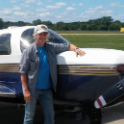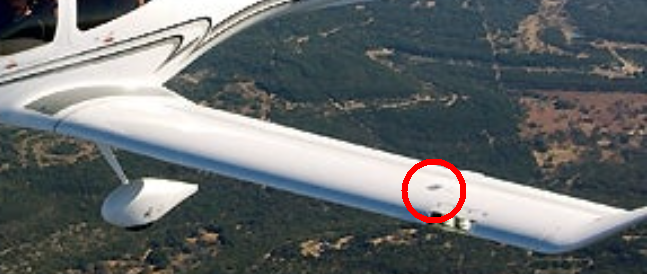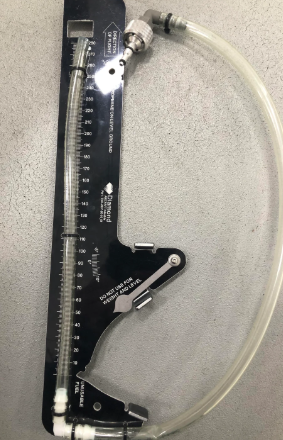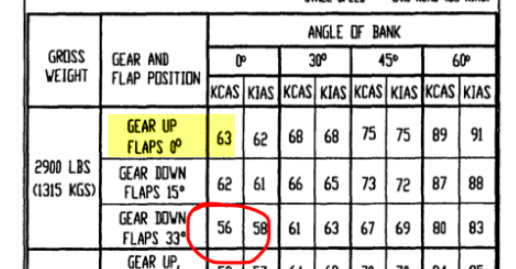-
Posts
4,246 -
Joined
-
Last visited
-
Days Won
17
Content Type
Profiles
Forums
Blogs
Gallery
Downloads
Events
Store
Everything posted by midlifeflyer
-
I did this years ago - like before cell phones A suggestion from the guys at Opposing Bases: when you want to do a remote in-air pickup, use an airport rather than a fix. I don’t recall their reasons, but one I can think of, is that you know that you will be calling the correct facility - ARTCC or TRACON as applicable - and they will have it. Might also be a head-scratcher for some controllers.
-
I said “over 2000” because BTDT. As I found out (and should have realized), when ceilings are low enough for “actual” IFR, ATC is busier and there are more IFR ops. So there I was, flying circuits around the airport for at least 10 minutes until they could fit me in. The other airplane waiting, on the ground, got out first.
-
Thanks, I guess. I’ve been slowly retiring for the past 13 years Now I’m probably 99.99% retired.
-
Unfortunately, I don't personally know any of the lawyers who practice in that area in your neck of the woods, so I can't make a recommendation.
-

FAA Bars GA from flying into 12 Major Airports
midlifeflyer replied to hammdo's topic in Miscellaneous Aviation Talk
The formal order reducing services was published in today’s Federal Reguster. Most of it involves the 10% reduction in 121 and scheduled 135. This is the portion that applies primarily to GA. (Sorry, indenting doesn’t work well here.) c. Termination of ATC Service Due to Staffing Levels Accordingly, with respect to ATC services, under the authority provided to the FAA Administrator by 49 U.S.C. 40103, 40113, and 46105(c), it is hereby ordered that: 1. When an FAA owned and operated facility does not have adequate staffing levels, ATC may elect not to provide the following services: a. Radar Traffic Information Service; b. Radar Assistance to visual flight rule (VFR) aircraft; c. Terminal Radar Services for VFR aircraft; d. VFR Traffic Pattern Operations; e. Practice Approaches to VFR aircraft; f. Flight checks services to restore inoperable equipment and approaches; g. ATC services to parachute operations; or, h. ATC services to certain special or unusual operations. 2. When an Air Traffic Control Assigned Airspace (ATCAA) or Military Operating Area (MOA) is located within a geographical area served by an FAA owned and operated facility that does not have adequate staffing levels, ATO may elect not to activate the ATCAA or MOA. Full Order https://www.govinfo.gov/content/pkg/FR-2025-11-12/pdf/2025-19850.pdf -
Yeah he does. There are FAA traps is corporate aircraft use. If he’s talking dry leasing, sounds like @SilentT is planning to separate aircraft ownership from the company (“flight department company” issues) or, if owned by the business, use it for personal purposes as well. Depending on the details it might be a no-brainer or get funky, but legal advice is usually a good idea.
-
Thanks, Paul. Yes, that was part of my practice, but I’m retired now. I still keep up but that’s mostly for educational things like seminars/webinars and answering general questions.
-

IMC with a carbureted C Model
midlifeflyer replied to oisiaa's topic in Vintage Mooneys (pre-J models)
Problem is the carb ice doesn't require airframe icing conditions. They books talk about it but my big carb ice event actually took place when the temp was 70°F and I was in cruise flight. -

IMC with a carbureted C Model
midlifeflyer replied to oisiaa's topic in Vintage Mooneys (pre-J models)
Not a Mooney but I had a serious carb ice event in the clouds in a Comanche years ago. Here's the tip: An unexplained loss of power (especially partial) should be met by an immediate application of full carb heat. Any delay could mean that there ain't no heat when you finally get around to it. We are taught this very early on. If you are one of those who uses carb heat all the time as a preventive when reducing power for landing, your brain is keyed to correlate any power reduction with applying carb heat. But if you are not one of those, it is highly likely you will forget to use it when you need it. The NTSB did a study of that years ago based on ASRS reports. It even came out with a recommendation (ignored by the FAA and manufacturers) that carb heat always be used at low power settings just so it's not forgotten. So the key isn't flying around with carb heat when icing conditions exist. That's just unnecessarily wasteful of power. Rather find a way to ensure it is what you do when an issue occurs. Best is to always pull out that checklist. Perhaps even placing "Carb Heat ... As Needed" in that otherwise mostly empty Cruise checklist that many pilots ignore altogether. But find something to act as a reminder. -

Mountain Flying Bible Revised by Sparky Imeson
midlifeflyer replied to FlyingDude's topic in Miscellaneous Aviation Talk
The CD just contained an unprotected pdf of the book and some bonus material. Not very sophisticated, but it was bookmarked. It may not have been widely distributed or someone would have posted it online by now despite the copyright. I agree with you that Kindle would be a great way to do it. I suspect the family is just keeping things as is and maybe just selling off what is left if the last publication’s inventory. -

Mountain Flying Bible Revised by Sparky Imeson
midlifeflyer replied to FlyingDude's topic in Miscellaneous Aviation Talk
That’s not the “Revised” edition. It also appears to be a scan, not an “original” PDF Yes, at one time, the book was sold in pdf format on a CD. The CD is displayed on the website, but it doesn’t appear to have an order link. @FlyingDude, have you tried contacting the company and asking? -
You liked needing three hands to check fuel level? The club has a refuel to full after flying rule, but we use the device for checkouts and you really do have to use it if you don't refuel at a remote location, although I suspect many just rely on the totalizer and assume no leaks.
-
They are definitely fun to fly. The fuel caps are out toward the wing tip rather than the wing root like most. The result is that with the dihedral, you don't have be be down more than maybe 3-4 gallons and you can no longer visibly see the fuel. So there's this horrible manometer (pressure differential) measuring device is used to get a manual reading.
-

Cirrus training CAPS use rationale
midlifeflyer replied to Rick Junkin's topic in Miscellaneous Aviation Talk
I didn't either, but Jack is correct. Cirrus had a very bad accident rate. When I flew one I joined COPA and saw many of the discussions about it. I also had a friend who was first generation - original waiting list and everything. At some point he decided I should fly the airplane so we went up together. I heard about some of the procedures they were being taught. Then there was a big push toward standardization accompanied by the mantra "CAPS Consider." This video is from the 2011 COPA Migration. It's a god illustration of what was going on in the Cirrus community at the time, with Rick Beach as a driving force. -

Cirrus training CAPS use rationale
midlifeflyer replied to Rick Junkin's topic in Miscellaneous Aviation Talk
That's the way I hear it. But bear in mind that "a man just hears what he wants to hear and disregards the rest" That's especially true when you are trying to make a point. -
Sounds like you'll never fly a Diamond
-

Cirrus training CAPS use rationale
midlifeflyer replied to Rick Junkin's topic in Miscellaneous Aviation Talk
It's hard to check the numbers but I guess one could come up with a way to figure out how many injuries and fatalities were attributable to loss of control and other types of maneuvering errors trying to prevent damage to the aircraft vs pilots who actually thought "it's the insurance company's airplane" actually meant to disregard safety. So far, I haven't met anyone who thought that. Mostly, "insurance company's" and "fly all the way into the crash" seem to live comfortably side by side. You'd also have to come up with some category definitions. Like, is a stall spin accident while trying to turn back to a runway after an engine failure on takeoff instead of landing straight ahead in a field, an effort to fly into the crash or an effort to save the aircraft? Since we're talking about Cirrus and CAPS, is the failure to pull an effort to save the airplane rather than the passengers? -

Cirrus training CAPS use rationale
midlifeflyer replied to Rick Junkin's topic in Miscellaneous Aviation Talk
@GeeBee is correct. They passed spin certification tests in Europe. EASA did not accept the FAA's ELOS satisfaction and wanted more. -
I fly out of TTA, but I am a non-owner. TTA has a huge waiting list for hangar space. JNX is, at this point, pretty much run by a 141 school. I’m not sure about the hangar situation at HRJ, so I’d call them to get a general idea unless someone else here is familiar with the area. If you will be near Fuquay, have you considered looking at 5W5? This is an old airport that was recently purchased by a group that are still in the process of rehabbing it. New runway is in great condition but they are still in the process of building facilities. Edit: you can see the HRJ waitlist here.
-
Once you get that LSA certification has exactly nothing to do with sport privileges, the problem goes away. But I've seen more than enough confusion on it that the FAA probably should have come up with a new category name and tossed "LSA" out altogether. The other one I've seen several times is, you can't fly that Cessna 172/M20J, whatever unless it gets recertified as an LSA.
-
If you are asking whether you can fly it only exercising sport privileges, no. The relevant number is 63, not 56. Vs1, not Vs0.
-
One of the things I've seen confusion about is the difference between an LSA (an aircraft certification) and what those exercising sport pilot privileges (a pilot certification) are allowed to fly. One of the things MOSAIC did was to decouple them. The best illustration of this is that you will not find a reference to "light sport aircraft" anywhere in amended Part 61. They've been removed. The best practical illustration is, as you point out, a light sport aircraft can have a Vs0 of 61. IOW, there will be LSAs that sport pilots are not authorized to fly. Remember these ancient private pilot knowledge test questions? With respect to the certification of airmen, which are categories of aircraft? vs With respect to the certification of aircraft, which is a category of aircraft? That's what we are dealing with.
-
Vs1 not Vs0.
-
The 1 KT difference for Category A was only a minor detail but I guess it's more important that they match the FAA than that the match FF







